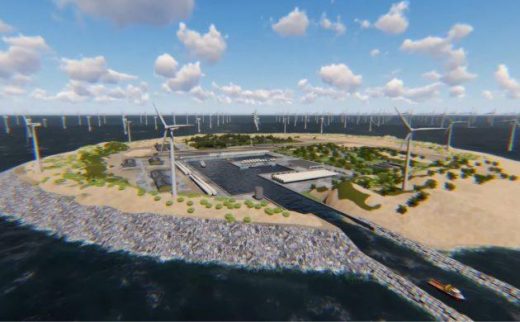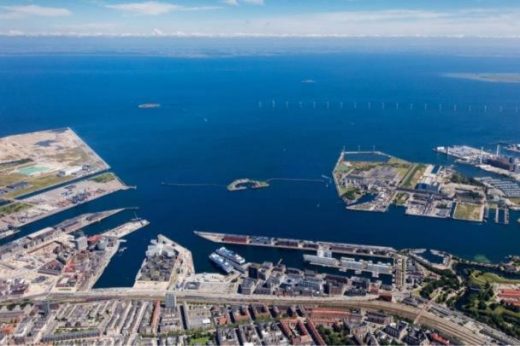It is a project of Denmark in which an island will be built artificially in the North Sea. It will be located about 80 km into the North Sea and will cover an area of 2.6 square kilometers which is slightly less than the Central Park of New York city in the USA. The name of the island is Lynetteholm. The plans for the island have been made since 2018. It is said that the construction of the artificial island will not begin before 2035 and will be completed in 2070 which is almost 50 years from now. The project is being called the largest project to be undertaken in Denmark’s history. It is said that the island will be as big as 18 football pitches (120000 sq m), but there are hopes to make it three times that size.

Fig 1: Denmark’s future Energy Island in North Sea
Purpose of the Project:
It is an effort of the country to switch to green energy. The main purposes for establishment of the island are –i) to provide space for new buildings which will provide accommodation to about 35000 people and ii) to act as a barrier for Copenhagen port and protect it from the sea water which is expected in the near future. Particularly a dam system will be constructed around the island and that will keep water from rising sea and surges away from the city. The Government announced that the artificial island will accommodate a 10 GW wind farm consisting of at least 200 wind turbines. The project will provide clean power to the 3 million residences of Denmark. The excess energy produced from the project will be delivered to neighboring countries. The island will be a platform which will serve as a hub for electricity generation from the surrounding offshore wind farms. An estimate suggests that the project will be able to store and produce enough green energy to cover the electricity requirements of over 3 million households in the European Union (EU).
Construction Process of the Island:
The Danish parliament has approved the construction of an artificial island, Lynetteholm off the coast of Copenhagen. The Lynetteholm project was designed by COWI, Arkitema and Tredje Natur as a housing and business district which will become a bulwark against climate-change induced storms. The 275-hectare project will be built by development company By & Havn. They will use soil from construction projects in Copenhagen and the surrounding area. It is said that the harbour will act as “climate and storm surge protection”.
The first phase will have a capacity of 3 GW and will involve approximately 200 offshore wind turbines sending electricity to the hub. It will be distributed to the nearby countries via grid. In future, the capacity of the hub will be expanded to 10GW. The estimated cost of construction of the island is approximately 210 billion Danish krone.

Fig 2: An aerial view of Copenhagen harbour, where Lynetteholm will be constructed
Impact of the Project:
According to environmentalists, the project has attracted severe environmental concerns. Many people have opposed this decision of government thinking to its realization. The protesters are worried about Copenhagen because it is being transformed into a large construction site for years to come. In the first stage of the project, the island requires about 80 million tons of soil to be delivered on-site. People worry that the city and the surrounding environment will drastically change as the project begins. An environmental agency said that it would require 350 truck deliveries per day to transport all the materials needed and thus pollution will be created. The material deposition in the sea and sediment movement will create an impact on the local ecosystem.
If you have a query, you can ask a question here.


